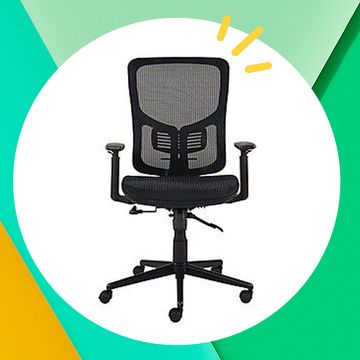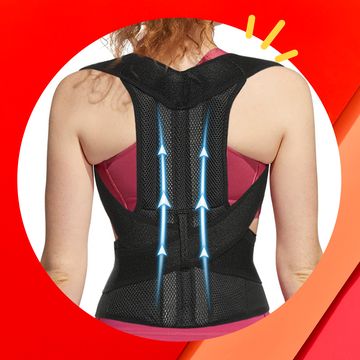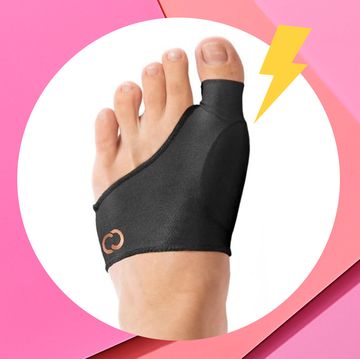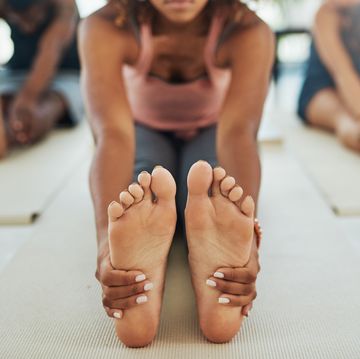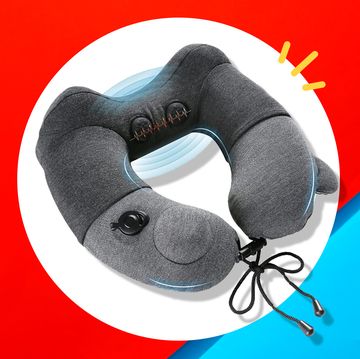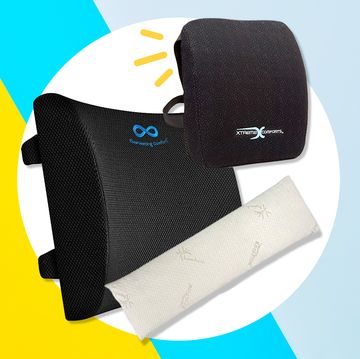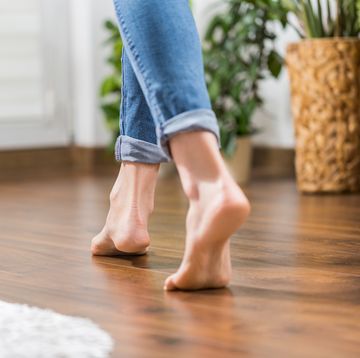This article was written by Bill Gottlieb and repurposed with permission from Men's Health.
In the corporate hierarchy of the human body, your brain is the boss, your blood is the cash flow that keeps the company alive, and your bad back is the employee who's chronically late to work, often insubordinate, and occasionally under the influence of some pretty powerful narcotics. Unfortunately, you can't go ahead and fire its sorry ass because, in case you hadn't noticed, it's your ass, too. Besides, as much as it's hurting business, your back is still the best (and only) body part for the job.
What to do? One word: micromanage. Unlike employees in the typical brick-and-mortar outfit, flesh-and-blood workers respond surprisingly well to this approach. See for yourself. Take one or more of the micromanagement strategies that follow, add them to your back's employee handbook, and then look over your shoulder to see how it's shaping up. In no time, you'll be logging fewer sick days and showing increased productivity. Heck, you'll feel so good, you may even want to merge with another company.
Stand Up to the Ache
Every night, your back is booby-trapped by extra fluid that seeps into your disks, the spongy cushions that separate the 24 vertebrae in your spine. "When you bend over in the morning, that fluid creates more stress on your spine, making your back more vulnerable to pain," says Stover H. Snook, Ph.D., a lecturer on ergonomics at the Harvard University school of public health.
Journal of Occupational Rehabilitation, Snook and his fellow researchers found that chronic-back-pain sufferers who followed a plan for staying upright in the a.m. had 23 percent fewer painful days than those who bent freely.
(For an at-home fitness program that strips away fat and reveals rock-hard muscle, try the 21-Day MetaShred.)
Here's the plan: Move to the edge of the bed, roll onto your side, and hang your feet off the mattress. With your back straight or slightly arched, use your arms to push yourself to a seated position and then to a standing position.
Now stay standing. Stand to urinate (leave the seat up the night before). Don't bend over the sink when you brush your teeth or shave. Step into your pants without bending over. (Heed Micromanager's Tip #2 before you put your shirt on.) Even eat breakfast standing up. Save the must-bend activities, such as tying your shoes, for last.
Pack Heat
Don't swallow your medicine; wear it. Researchers at UMDNJ/New Jersey Medical School found that people who wore disposable heat wraps every day had 25 percent less back pain than those taking either daily acetaminophen or ibuprofen. "Heat wraps increase bloodflow, getting rid of the by-products of tissue injury, and increase the elasticity of the tissues, improving mobility," says Scott Nadler, D.O., the lead study author.
RELATED: Try The Fit Man's Back-Saving Workout
Simply place a wrap around your body, position its heating disks on your lower back, get dressed, and head out. Note: Only the ThermaCare brand has been studied for all-day use, says Dr. Nadler. (Other brands might get too hot and cause burns.)
Treat Your Arthritis
Known best as a knee saver, chondroitin sulfate may also help your back. In one 6-month study of people suffering from lower-back pain, Russian researchers found that 73 percent of those who took a daily chondroitin supplement had improved mobility and less pain.
Why did it help? Because back pain is often caused by arthritis—the degeneration of the cartilage that cushions vertebrae, says Luke Bucci, Ph.D., C.C.N., an adjunct professor of nutrition at the University of Utah. "Chondroitin is a component of cartilage and works long term to slowly rebuild the tissue." Take 1,200 milligrams of chondroitin sulfate daily.
Don't Show Fear
University of Pittsburgh researchers evaluated people who were out of work due to lower-back pain, and found that those who feared their pain and avoided activities perceived as painful were the least likely to be able to return to work."When you fear and avoid pain, you're more likely to fear and avoid strengthening and stretching exercises—the very exercises that can help you recover," says Steven George, Ph.D., P.T., an author of the study.
Understand that pain during recovery is normal and confront it, says George. "In terms of duration of exercise, go about 10 percent beyond your 'pain barrier,'" he says. If, for example, you're strengthening your back by walking on a treadmill and feel pain at 5 minutes, walk another 30 seconds.
When is pain really a sign of something serious? When it "moves" to your thighs, changes to numbness, or is associated with weakness in your legs. In that case, you can be afraid—and see a doctor.
Act Depressed
Turns out the pain may be all in your head. In a study review published in the Archives of Internal Medicine, researchers found that back-pain sufferers who took antidepressants (such as Paxil) had 40 percent less pain than those who popped a placebo. Antidepressants reduce levels of serotonin and norepinephrine, brain chemicals that transmit pain signals between nerve cells, says Stephen M. Salerno, M.D., the lead study author.
And their side effects—drowsiness, increased heart rate, and dry mouth, to name a few—may be preferable to those of nonsteroidal anti-inflammatory drugs. "If NSAIDs, such as ibuprofen and naproxen, are used for more than a few weeks, they can cause kidney problems and gastrointestinal bleeding, and can worsen high blood pressure," says Dr. Salerno. See if your doctor thinks an antidepressant is for you.
Entertain the Pain
Never mind the savage beast; music soothes the lower back. When Austrian researchers studied the effects of listening to relaxing music (and thinking equally relaxing thoughts) on back pain, they found that people who listened for 25 minutes daily for 3 weeks reported 40 percent less pain than those given the silent treatment. "Music diverts your attention from the ache. It also helps reduce stress hormones and muscular tension," says Franz Wendter, Ph.D., one of the researchers.
The key here is relaxing music, meaning nothing by Monster Magnet. Instead, try Silk Road Vol. 1 by Kitaro (all the yin of New Age music without the yang of Yanni) or Aerial Boundaries by Michael Hedges (another dead guitar god).
RELATED: 3 Ways to Speed Recovery After a Hard Workout
Find a Support System
Surgery is the last-resort remedy for a bad back. The next-to-last resort? The partial-body-weight-support system. With the PBWS system, you walk on a treadmill while wearing a specially designed harness that supports some of your weight. (Relax—you do this at a physical-therapy clinic, not your gym.) In a clinical trial at the Lahey Clinic in Burlington, Massachusetts, researchers found that five out of six people who used the system for 6 weeks had significant reductions in back pain and improved functioning.
The PBWS system combines two back-pain busters, says David Joffe, P.T., the lead study author. One is endurance exercise, like walking. The other is "spine unloading," which can relieve the compression of the vertebrae that occurs whenever you sit or stand. Ask a physical therapist (or your doctor) if you should try the PBWS system, says Joffe. If he says yes, so will your insurance.



